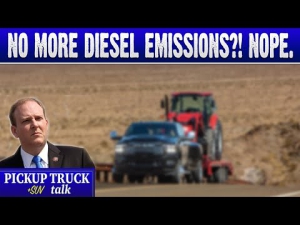Biden’s Emission Rules Are Better Than Obama’s, but Environmental Groups Say They’re Not Enough
It’s no secret that environmental policy is one of the dividing points in American politics. While the Obama administration implemented regulations that improved fuel economy, the Trump administration slashed those regulations.
While finding cars with efficient fuel economy is important to consumers, it’s arguably more important to the Democratic party. Environmentalists were generally happy that Biden won the presidential election but are now concerned if his car emissions policy goes far enough. Here is what you need to know about the new emissions policy.
Biden’s new policy
During the Obama administration, car manufacturers were required to reduce emissions from their lineup by 5% per year, as reported by auto blog. However, Trump reduced that standard to only 1.5% per year.
In response, the state of California attempted to lead the country in car emission regulations. To oversimplify a complex legal issue, California was able to work with five automakers to reduce their emissions by 3.7%. With a Democrat back in the White House, emission regulations will return to the federal level.
Biden will return to the 5% reduction established by Obama and even exceed it in subsequent years. Specifically, the 5% reduction will increase after 2026. The Truth About Cars reported that the exact number is unknown, but most experts predict it will be between 6% to 7%.
Is it enough?
While most environmentalists would agree Biden’s plan is an improvement, there is a fair amount of anxiety if it is enough to reduce the onset of climate change. One group that has volleyed such criticism is the American Council for an Energy-Efficient Economy (ACEEE).
To summarize, ACEEE believes that Biden needs stronger regulations to compensate for the “dirty cars” made during the Trump administration. Additionally, the group suggests that technology has improved to the point where a 5% reduction is too easy of a goal. They prefer to see more ambitious regulations that are more in line with recent technological advancements.
Additional criticism comes from David Cooke, a senior vehicles analyst with the Union of Concerned Scientists. Cooke is more concerned with the “off-cycle credits” in Biden’s plan, as reported by Green Car Reports. The off-cycle credits allow automakers to bypass emission reductions in exchange for researching new technologies that may reduce emissions.
Cooke is concerned that the off-cycle credits offer little accountability. Additionally, technologies from prior years can be used as an off-cycle credit. A car manufacturer can go back as far as 2014 to utilize the credit program. It is anticipated that old concepts like grille shutters and engine idle-stop systems will be used as off-cycle credits, even though they’ve been in cars for years.
The role of EVs
Electric vehicles may be the solution for reducing car emissions, at least until we get cars that eat pollution. The Biden administration has taken note and hopes to capitalize on the recent popularity of EVs.
Biden wants 40% of all new car sales to be electric by 2030, per auto blog. However, this is just a proposed rule by the EPA. It is unclear if this will become an official regulation or not.
Senator Tom Carper of Delaware is a major proponent of the EV mandate and wants to see it go even further. Specifically, the senator wants 100% of new car sales to be electric by 2035. Senator Carper believes that the auto industry is already making huge investments in EVs on its own. A nudge from Uncle Sam could make car emissions a thing of the past.
Related: What Do They Test for in an Emissions Inspection?
The post Biden’s Emission Rules Are Better Than Obama’s, but Environmental Groups Say They’re Not Enough appeared first on MotorBiscuit.







